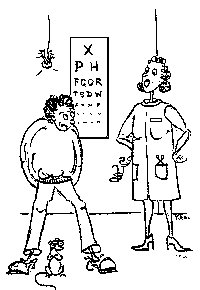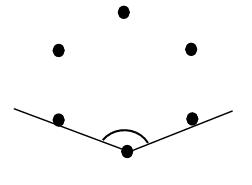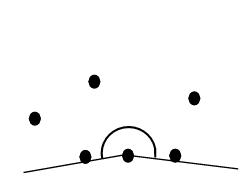 Ropesight is not as mysterious as some people make out. Many ringers pick it up with ease. That is just as well, since a lot of people don't teach it. So anyone who doesn't pick it up feels left out and inadequate.
Ropesight is not as mysterious as some people make out. Many ringers pick it up with ease. That is just as well, since a lot of people don't teach it. So anyone who doesn't pick it up feels left out and inadequate.The Tower Handbook
To many people, ropesight is 'seeing which bell to strike over', but it is much more than that. Ropesight involves looking at the ropes as a whole, and picking out useful information from what is seen, for example:
The first of these is 'the bell to strike over', and a common hint for finding it is to 'follow the bell that follows you' [143] , which is the second in the list.
Ropesight is an important skill. Without it change ringing becomes unreliable and error prone, since ropesight is the main source of prompts and checks about what to do next, and clues about how to correct mistakes.
 Ropesight is not as mysterious as some people make out. Many ringers pick it up with ease. That is just as well, since a lot of people don't teach it. So anyone who doesn't pick it up feels left out and inadequate.
Ropesight is not as mysterious as some people make out. Many ringers pick it up with ease. That is just as well, since a lot of people don't teach it. So anyone who doesn't pick it up feels left out and inadequate.
As a teacher you can help people acquire effective ropesight in several ways.
Start teaching it before it is needed. At the bell handling stage, include exercises that involve eye co-ordination, eg dodging with another single bell. This is particularly important if your trainees ring rounds with a simulator before they ring with other ringers (see section 11.5c), since it introduces the complementary visual element.
If you know which bell to follow, then you don't need ropesight to pick it out. This can make hunting easier to start with since it removes one thing to do. But the trainee can get hooked on looking at single ropes rather than developing the habit of 'looking wide' to see all the ropes and pick out the right ones. You can encourage a more visual style by pointing, rather than saying a number if you need to indicate bells. For example you may point to a pair and say 'those two' or 'over here', which narrows down the field but does not remove the need for the trainee to separate the two visually (and therefore stay in control rather than just doing what you say). See section 12.2k.
The more ropes there are, the harder it is to sort them out. The rope circle is also important. The wider angle of view you need to see all the ropes, the harder it is, and the greater the temptation to turn your head to look at individual bells. Once you do this it is only a matter of time before you look the wrong way and throw yourself out by trying to follow the wrong bell. When teaching the early stages of ropesight, try to provide a good angle of view, ie not too wide.
 Average angle of view for each ringer |
 Excessive angle of view for one ringer |
 Very good angle of view for one ringer |
People who wear strong glasses may have difficulty with ropesight at wide angles. See section 13.5c.
Here are some common ones with suggested advice.
| Problem | Description | Advice |
| Confidence | Panic degrades most of our mental abilities, and ropesight is no exception. If people have been told ropesight is difficult, they may be overawed by it. | Emphasise that ropesight is a learnable skill that can be developed by practice. Remind them of the basic techniques. |
| Arms in the way | Not seeing ropes to the side, or sticking the head out to peer round the arms just before pulling off. | Encourage looking all the time, not just when the bell is near the balance and the arms are close to the face. |
| Looking at the wrong ropes | Looking at individual ropes (sometimes the wrong one) and then locking the vision onto it to the exclusion of others. | Encourage a broad view taking in all the ropes, and resisting the temptation to latch onto individual ones. |
| Clinging to the last rope | Looking (only) at the rope for most of the stroke after it has been followed. | Encourage moving on as soon as possible, and certainly after pulling off after the other bell. |
| Looking up and down | Remnants of staring at the feet and/or following sallies up to the ceiling. Little time is left for seeing the other ropes. | Discourage vertical movement. Suggest fixing the gaze at about face level |
| Distraction caused by handling problems. | If you are struggling with a physical skill, the mental ones will suffer neglect. (This is very common). | Decide what the handling problem is and see how to solve it. |
Currently hosted on jaharrison.me.uk